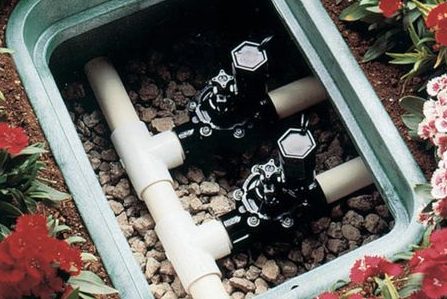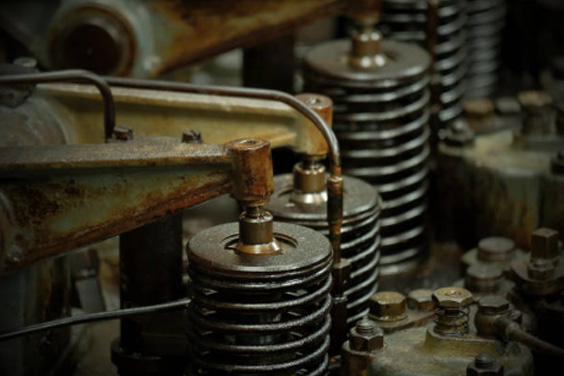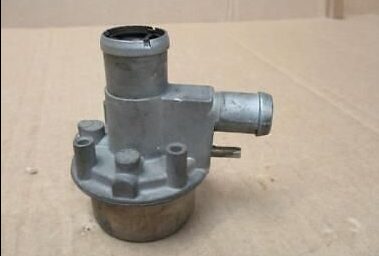Valves are a component in a piping system that is used to control the flow of the media through the system which can be achieved by the manipulation of a few types of obstructors within the valve.
The flow of a product via a pipeline is managed by a particular style of “quarter-turn” valve called a butterfly valve. This valve has been in use for a while; it can be used to restrict the flow of solid, liquid, or gas materials and has a wide range of uses.
Since their initial debut in the 1930s, they have been used by numerous industries. As the name implies this type of valve, is frequently composed of cast iron, which comes from how well its disc works. The valve opens or closes when the metal disc that is a component of its construction takes a quarter turn.
A rod is connected to the disc, sometimes known as the “butterfly.” The disc spins (a quarter turn) when the butterfly valve is fully opened, permitting almost unhindered fluid flow. To decrease flow, you can also open the valve gradually.
The valve can be closed by turning the butterfly (disc), which stops the flow of fluid. Regardless of the disc’s position, it is always perpendicular to or parallels the flow, causing the pressure to diminish.
To regulate the flow and pressure, there are electric actuated butterfly valves that control the flow of material through a circular pipe or tube. They are for use in controlling the flow of compressed air and other gas, or for vacuum service.
What is Lug type Butterfly Valve
Usually made of metal, lug-type butterfly valves are designed mainly from steel or ductile iron. For bolt connections, they have threaded tapped lugs placed on the valve flanges.
Since one end of the line can be removed without affecting the other, its design is comparable to a three-piece ball valve. This is further accomplished by employing threaded inserts, flanges, and two sets of lugs (bolts) that don’t require nuts because each flange comes with its own set of bolts.
Noting that lug butterfly valves may be cleaned, inspected, repaired, or replaced without shutting down the entire system is also crucial and convenient for your business requirements.
End-of-line service is suitable for these valves, however, a blind flange is always advised. Butterfly valves in the lug form are produced to work with either electric or pneumatic actuation. Based on the application and the flow media, the disc and seat materials should be chosen.
This butterfly valve, which has threaded holes and is of the lug type, can be applied in a variety of situations. The valve functions as a stopper, a tap for discharge at the pipeline’s end, an open/close device, and a flow control device.
The pipeline can be installed or removed with ease thanks to the threaded holes. Manual, pneumatic, hydraulic, or electric operations are all possible.
What is Wafer Type Butterfly Valve

The majority of wafer-style butterfly valves are designed with four holes that line up with the pipeline they are linked to. The valve is made to fit snugly between two pipe flanges.
The majority of wafer valves are compatible with most flange standards. The seal between the valve and flange connection is incredibly strong thanks to the rubber or EPDM valve seat.
Wafer-style butterfly valves cannot be utilized as pipe ends or end-of-line services, in contrast to lug-style butterfly valves. If either side of the valve needs maintenance, the entire line must be shut down.
Butterfly valves in the wafer form are less sensitive in case of large temperature differences and are more expensive in heavier and larger sizes.
The purpose of a wafer butterfly valve is to maintain a seal against dual-directional pressure differential in fluid flow. In other words, the wafer form of butterfly valves was created to maintain a tight seal, protecting against bi-directional pressure differential to prevent any backflow in systems that were created for unidirectional flow.
This is achieved by utilizing a securely fitting seal, such as an O-ring or carefully machined gasket, together with a flat valve face on the downstream and upstream sections of the valve.
Lugged Vs Wafer Style Butterfly Valve
After the above discussion, it is important to know the differences between lugged and wafer butterfly valve.
It is significant to highlight that cleaning cannot be performed by “pigging” pipelines with butterfly valves. The practice of using “pigs”—devices—to perform a range of maintenance tasks is known as “pigging.”
Wafer Style Butterfly Valve Struction

Additionally, lug-style butterfly valves use threaded, tapped lugs to attach the valve to pipe flanges utilizing bolted connections. On the other side, wafer-style butterfly valves are devoid of attaching lugs. They typically have four holes to line up with the attached piping. Two piping flanges are used to clamp the valve.
Wafer Style Valve Advantages and Disadvantages

Advantages
- Lighter
- Cheaper
- Easy installation
Disadvantages
- Pipe flanges required
- More difficult to center
- Not suitable as an end valve
A Wafer-style butterfly valve has an annular body and a few untapped centering holes. There are two Wafer types and four Wafer types. The two-pipe flanges’ bolt holes, as well as the butterfly valve’s centering holes, are used to insert the flange bolts. The pipe flanges are brought together while the flange bolts are tightened, clamping and holding the butterfly valve in position between the flanges.
Lugged Butterfly Valve Struction

Compared to lug-style butterfly valves, wafer-style butterfly valves are lighter and less expensive.
As the name implies, lug-type valves have lugs that are used to mount the valve to lugs that are attached to the flanges on the ends of sections of pipe, allowing for the independent removal and replacement of each length of pipe.
Wafer-type valves lack attachment lugs but may contain alignment lugs, whereas there are often 8 or 12 lugs where 4 or 6 lugs are used to connect each pipe portion. They are positioned between two lengths of pipe that have flanges on the ends. Shutting down the system is required to replace either section of the pipe.
Lug Style Butterfly Valve Advantages and Disadvantages

Advantages
- Suitable as an end valve
- Easier to center
- Less sensitive in case of large temperature differences
Disadvantages
- Heavier with larger sizes
- More expensive
A butterfly valve made in the Lug design has so-called “ears” around the body’s whole perimeter into which threads were tapped. By using 2 different bolts, the butterfly valve can be tightened against each of the two pipe flanges in this manner ( one on each side).
The possibility of relaxation from thermal expansion is less likely with a butterfly valve than with a Wafer-style valve since the butterfly valve is linked to each flange on both sides with separate, shorter bolts. The Lug version is, therefore, better suited for applications with significant temperature variations.
One should pay attention, though, because most Lug-style butterfly valves will have a reduced maximum allowable pressure as the end valve than their “normal” pressure class indicates.
Application Comparison
Coming to the topic of butterfly valve lug type vs wafer type, while wafer-style butterfly valves cannot be utilized for end-of-line services, lug-style butterfly valves can. The entire line must be shut down if there is a need for maintenance on a line with a water-style butterfly valve.
Industrial Applications Of The Lugged Vs Wafer butterfly Valve

Applications for industrial industries such as food processing, pharmaceuticals, chemicals, oil, water, and wastewater management, use both lug and wafer butterfly valves. The majority of the time, the valves used in these industries are produced in accordance with cGMP (current good manufacturing practice) standards and the “Pharmaceutical Quality/Manufacturing Standard.”
Ball valves have mostly been superseded with butterfly valves in many sectors. This is particularly true for businesses that deal with petroleum because these products are less expensive and simpler to install.
Many different industries employ butterfly valves, including:
- Oil and gas
- Chemical processing
- Water and wastewater processing and transportation
- Food processing
- Pharmaceuticals
- Manufacturing
- Shipbuilding and shipyards
- HVAC
The butterfly valves have a variety of uses, furthermore, they can also be divided into many kinds. However, the most prominent discussion remains on the lug type vs wafer butterfly valve usage.
Specifications to be noted before buying from Butterfly Valve Manufacturer

The following should be specified to the butterfly valve manufacturers while ordering
- Flange rating/Pressure
- Material content, viscosity, Specific gravity, and the fluid’s makeup all must be considered when handling it.
- Pressure drop or required Cv (maximum)
- Flow rate
- Design and operating temperatures
- Piping moments
- Valve body, Disc, Seat material
- Valve plate material
- Valve diameter or connected pipe diameter
Conclusion
Butterfly valves are used in a variety of sectors and applications, including food, water supply, wastewater treatment, fire protection, gas supply, fuel handling, and sanitary fittings. They are also employed in the chemical and oil, pharmaceutical, and food industries. Water pipelines employ butterfly valves as control valves to stop the flow of water. These enormously sized valves can handle slurries and liquids containing substantial amounts of solids when applied at low pressures.
Due to the material’s extreme durability and corrosion resistance, stainless steel butterfly valves are employed in harsh and maritime environments. Depending on one’s demands and requirements, one should select the lug type or wafer type butterfly valve stated above based on its features and applications.











